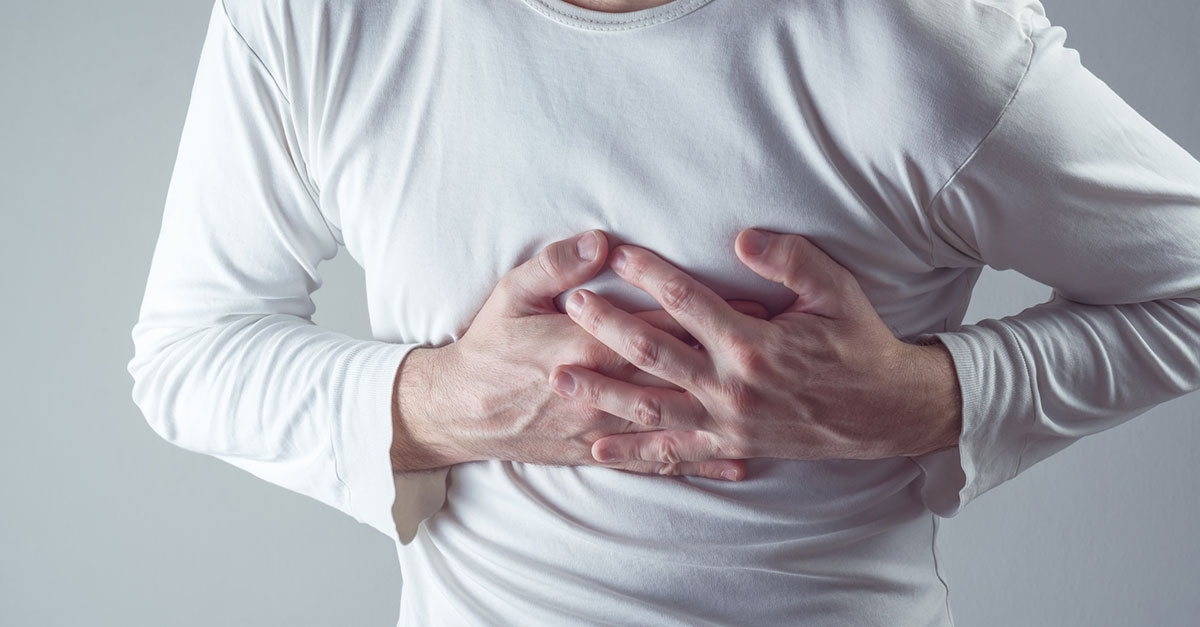When I caught a glimpse of Clara, a local college basketball coach in her mid-30s, clutching her chest as she was wheeled from triage to a cardiac bed in the emergency department, I was quite surprised. I knew that she was a serious athlete herself, which, along with her age, put her at low risk for heart problems. Her chart also showed that she had no risk factors for vascular or lung disease and hadn’t suffered any recent injuries.
Once I got a closer look at Clara, I could see that she was pale and sweaty. She also said she was suffering from “insanely bad” chest pain. The electrocardiogram she had just received to check for a heart attack was textbook normal, and so were her vital signs, except for a mildly elevated pulse—most likely due, in part, to the pain and anxiety she was feeling. Still unsure what was causing her symptoms, we gave her aspirin and nitroglycerin just in case it was a heart attack and a light dose of morphine for her pain.
Clara’s story then began to unfold. She explained that over the previous four days she had gradually developed a low-grade fever, chills and body aches. Then, suddenly, that morning, she had been stricken with severe, sharp spells of pain on the right side of her chest. Pain episodes occurred every hour or so and lasted about 30 minutes. When I asked Clara to take a deep breath, it was very uncomfortable for her, and the painful area of her chest was extraordinarily tender to touch.
All these clues made me worry that Clara might have a pulmonary embolism (a potentially deadly blood clot in the lungs). An aneurysm in a major blood vessel, or even a case of pneumonia with unusual signs and symptoms, were also possibilities, though less likely. To see whether Clara had one of these very dangerous conditions, I ordered a “stat” CT scan of her chest. I was pleased but puzzled when her chest CT and the blood work that had just been analyzed were entirely normal.
Just as Clara had described, her chest pain continued to come and go every hour or so. To see if there was anything in her medical history that might give us more clues, I contacted Clara’s family doctor as well as a cardiologist. Clara’s family doctor admitted her to the cardiac unit and mentioned that the case sounded like “The Devil’s Grip,” a rather antiquated but entirely legitimate medical term for a rare condition that causes intense chest pain.
As it turns out, Clara’s doctor was right. After 48 hours, she had fully recovered. We also got back positive results for Clara on a serum antibody test to Coxsackie B, the virus that causes pleurodynia (also known as “The Devil’s Grip”). This viral infection of the muscles of the chest wall and often the upper abdomen causes excruciating pain that comes and goes in spasms for two to six days, then generally vanishes. Coxsackie B can be easily spread from one person to another—for example, by kissing, by sharing eating utensils or a drinking straw or by eating food that’s been contaminated with the virus. Usually, a person’s immune system does a good job of disarming the virus so the infection causes only a mild, flulike illness, but some people, like Clara, aren’t so lucky.
Lesson learned: In rare cases, severe chest pain is due to a relatively benign illness, rather than a deadly cardiac, pulmonary, vascular or abdominal condition. Still, chest pain should always be immediately evaluated—no matter what your age or how healthy you think you are.


